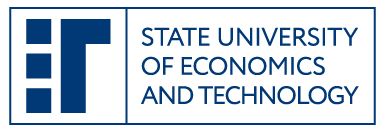EU Metrics for the Circular Economy in Light of Modern Business Practices
DOI:
https://doi.org/10.62911/ete.2025.03.01.01Keywords:
sustainable development, circular economy; EU indicators; waste management; business transformation; material efficiency; recycling; green public procurement; green economy; digitalization.Abstract
Abstract: The study examines the current structure and methodological framework of circular economy metrics adopted in the European Union, emphasizing their relevance for modern business practices under the European Green Deal. In the context of growing resource constraints and regulatory pressure for sustainability, the research aims to critically assess the ability of the EU's circular economy indicators to reflect the complexity of economic, environmental, and behavioral transformation processes. The analysis is based on the updated Eurostat framework, which includes five thematic blocks and eleven key indicators. Special attention is paid to metrics on material consumption, waste generation, green public procurement, circular material use, and innovation activities. Using qualitative content analysis and cross-sectoral comparison, the study highlights gaps in digital integration, sectoral adaptation, and behavioural dimensions of circularity monitoring. The findings reveal substantial asymmetries in waste recycling rates, dependence on primary materials, and the share of secondary raw materials in supply chains. It is shown that while large enterprises more actively implement circular practices, SMEs face regulatory, technological, and financial barriers. Moreover, the lack of behavioural and digital indicators constrains the system’s responsiveness to emerging business models such as «Product-as-a-Service» and sharing platforms. The paper concludes with suggestions for expanding the EU indicator framework to include metrics for digital traceability, consumption behaviour, and localized circular solutions. These improvements could enhance the practical value of circular monitoring tools for corporate sustainability strategies and cross-border policy harmonization. The study also raises the question of how circular metrics can better reflect the dynamics of global value chains and sustainability reporting standards. Integrating digital tools and behavioral data analytics is proposed as a crucial next step in advancing evidence-based policy and business decision-making.
References
Alivojvodic, V., & Kokalj, F. (2024). Drivers and barriers for the adoption of circular economy principles towards efficient resource utilisation. Sustainability, 16(3), 1317. https://doi.org/10.3390/su16031317
Baldassarre, B., & Calabretta, G. (2024). Why circular business models fail and what to do about it: A preliminary framework and lessons learned from a case in the European Union (Eu). Circular Economy and Sustainability, 4(1), 123-148. https://doi.org/10.1007/s43615-023-00279-w
De Pascale, A., Di Vita, G., Giannetto, C., Ioppolo, G., Lanfranchi, M., Limosani, M., & Szopik-Depczyńska, K. (2023). The circular economy implementation at the European Union level. Past, present and future. Journal of Cleaner Production, 423, 138658. https://doi.org/10.1016/j.jclepro.2023.138658
European Commission. (2023). Progress Report on the Circular Economy Action Plan. Brussels: EC Publications.
Eurostat. (2024). Circular economy – overview and indicators. Retrieved from: https://ec.europa.eu/eurostat/web/circular-economy/overview
Gorokhova, T., Shpatakova, O., Toponar, O., Zolotarova, O., & Pavliuk, S. (2023). CIRCULAR ECONOMY AS AN ALTERNATIVE TO THE TRADITIONAL LINEAR ECONOMY: CASE STUDY OF THE EU. Environmental & Social Management Journal/Revista de Gestão Social e Ambiental, 17(5). DOI 10.24857/rgsa.v17n5-002
Maksymova, I., & Nastase, C. (2024). European model of climate-neutral business development based on digitalization principles. Journal of European Economy, 23(2), 336-352. https://doi.org/10.35774/jee2024.02.336
Moreno, M. M. M., Esquinas, E. M. B., Yñiguez, R., & Puig-Cabrera, M. (2023). A global and comparative assessment of the level of economic circularity in the EU. Journal of Cleaner Production, 425, 138759.
Rosa, B. O., & Paula, F. D. O. (2023). Circular economy adoption by European small and medium-sized enterprises: influence on firm performance. Revista Brasileira de Gestão de Negócios, 25, 421-438. https://doi.org/10.7819/rbgn.v25i3.4232
Shaikh, M. B. N., Ali, M., Chaudry, U. M., & Khan, M. K. (2024). Metrics for sustainability and circular economy practices in context to modern manufacturing environment. Circular Economy and Sustainability, 4(3), 2073-2091. https://doi.org/10.1007/s43615-024-00395-1
Shavkatov, N., Abdurakhimova, D., Sherkuziyeva, N., Omonov, S., & Rakhmedova, M. (2024). Circular economy practices and their effect on corporate financial performance. Economic Annals-XXI. https://doi.org/10.21003/ea.V207-01
Trzcielińska, J., & Kaps, R. (2023, September). Knowledge of the Business Ecosystem and the Implementation of a Circular Economy. In ECKM 2023 24th European Conference on Knowledge Management Vol 2. Academic Conferences and publishing limited.
Wandl, A., Dąbrowski, M., Berruti, G., Acke, A., Obersteg, A., Varjú, V., & Kowalczyk, M. (2023). A holistic self-assessment tool for circular economy transitions in cities and regions. Europa XXI, 44, 15-35. DOI 10.7163/EU21.2023.44.10










